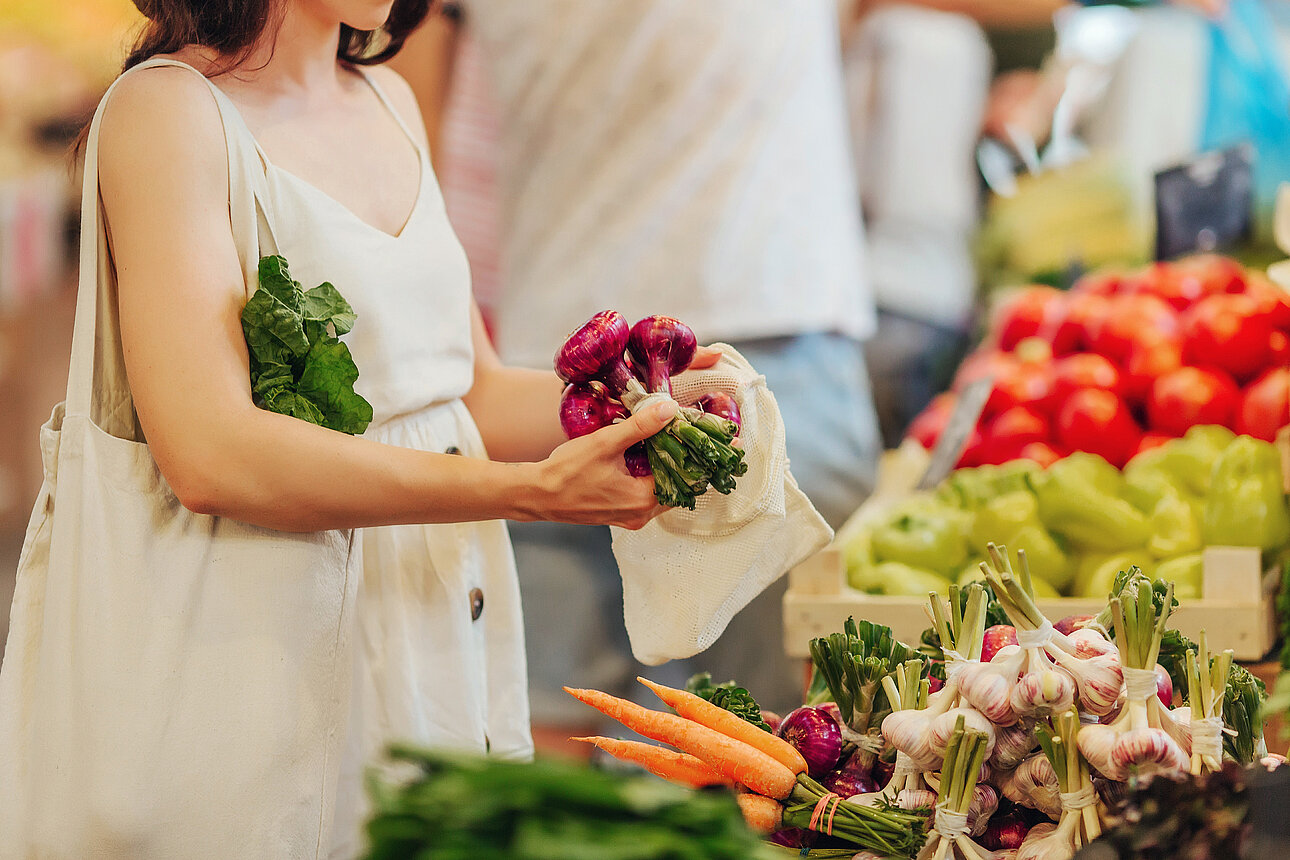Techniques and tastes continue to move forward globally as chefs, mixologists, and other industry professionals continue to innovate their food and beverage offerings. As we talked about in our annual report, 2023 Top Global Flavors, culinary trends keep moving toward healthier ingredients and preparations. This emphasis on healthy foods is increasingly seen as an avenue to develop flavor, rather than a detriment to the overall tastiness of a meal.
Below, we take a deep dive into some of these healthy top flavor trends of 2023.
 Plant-Based and Proud
Plant-Based and Proud
In years past, we have seen many vegan and vegetarian options that emulated the menu fixings and desirable flavor profiles for the average meat-enjoyer. As the overall population of vegans, vegetarians, and other people with plant-focused diets increases, chefs and mixologists are adjusting their recipes to better accommodate these health trends. Gone are the days when a restaurant could have one vegetarian option thrown in to appease the handful of vegetarians they might serve in a night. This market is now competitive. People are looking for more ethical food options, and these dishes need to demonstrate as much thought and complexity as the meat-based dishes on a menu.
This overall shift toward a healthier lifestyle has made vegetal flavors more generally desirable, and chefs and mixologists are showcasing their skills and understanding of vegetal ingredients. In both sweet and savory food and beverages, raw ingredients such as fruits, herbs, and vegetables are the main attraction. This is in stark contrast to the supporting roles they've played in the past, overshadowed by meals starring meat.
Subscribe to In-sight to receive articles and reports directly to your inbox, CLICK HERE!
Drinking Is for Everyone
Alcohol can have long- and short-term negative health effects, from bloating and skin blemishes to increased risk of heart and liver diseases or cancer. Studies show that people are generally drinking less alcohol these days. When they do drink, they often prefer a lower ABV than in years past. One result of this is that non-alcoholic cocktails, or "mocktails," are appearing on more menus and at a higher density. This allows those who are forgoing drinking to still feel like part of the group when out with their friends.
Within this trend toward a more sober clientele focused on healthy living, we continue to see the focus on vegetable- and plant-forward flavors. One of the reasons people are forgoing drinking is to cut some sugar from their diets. These alcohol-free or low-ABV beverages will typically have less sugar than their boozier predecessors to accommodate the modern palate. We have seen people's preferences shift toward a more sour flavor profile than enjoyed by the average person of a decade ago.
People are still willing to pay a premium for something they enjoy, and beverage construction has come a long way since the Arnold Palmer was invented. It is a good thing when culinary professionals can play around in a space that is accessible to a wider audience. In this case, people who can't or don't drink are able to take part in a cocktail culture that would otherwise exclude them.
Related: Discover Natural Goodness
Authentic Sourcing
One of the more significant cultural food trends we have observed in the last few years is a move toward celebrating regionally authentic cuisine. People's understanding of Chinese food is opening up to recognize the distinct characteristics and ingredients of Szechuan, Hainan, and Cantonese cuisines. Eaters learning more about regional cooking abroad is also happening for cuisines in Latin America, the Middle East, and Africa. This, coupled with the emphasis on vegetal flavors, adds up to diners who are more adventurous in eating fruits and vegetables.
One example of a recently popular food item indicative of this trend is tinga, a popular Latin American sauce made with tomatoes, onions, garlic, and chiles. Tinga, which originates from Mexico, has become one of the most in-demand Latin American food items in 2023. Ganjang, a popular Korean soy sauce, is another ingredient that, while common in its region of origin, is only recently seeing a rise in use abroad. Ganjang is now a very popular ingredient in comfort food as well as beverages and cocktails.
As the average consumer broadens their palate, the demand for new foods increases. North America consumes some of the most meat per capita in the world. When people experiment with cuisines from other parts of the world, vegetables more often take center stage. In experiencing these new ways to look at vegetables, people are finding out that broccoli and Brussels sprouts aren't so bad after all.
In the End
Many 2023 food trend predictions fall in line with the directions we have seen palates and consumer purchasing shift in recent years. People are making more effort to eat healthily, and the food and beverage worlds are right there to help them get what they want. Consumers are more educated and have higher expectations when it comes to plant-based cuisines. Chefs and mixologists are responding by pushing the boundaries of technique to better showcase these vegetal flavors and stand out from their competitors.
Consumers are also more aware of what makes regional cuisine special. This awareness comes coupled with an increased level of education about the health effects of the food they eat. As such, the expectation for food to be not only healthy but also delicious and authentic to the region of origin has increased. This has resulted in a higher demand for regionally specific plants such as the Shinko pear, which is found throughout Asia.
As the pandemic has wound down, consumers who have been locked inside have rekindled their sense of adventure. These more open-minded tastes drive a demand for new products, even if the trend is a continuation from years prior. It is likely we will see this sense of adventure continue to develop in consumer trends through 2023 and into 2024.
To learn more about our products and insights, get in touch with our team at Symrise today, Contact us here!






